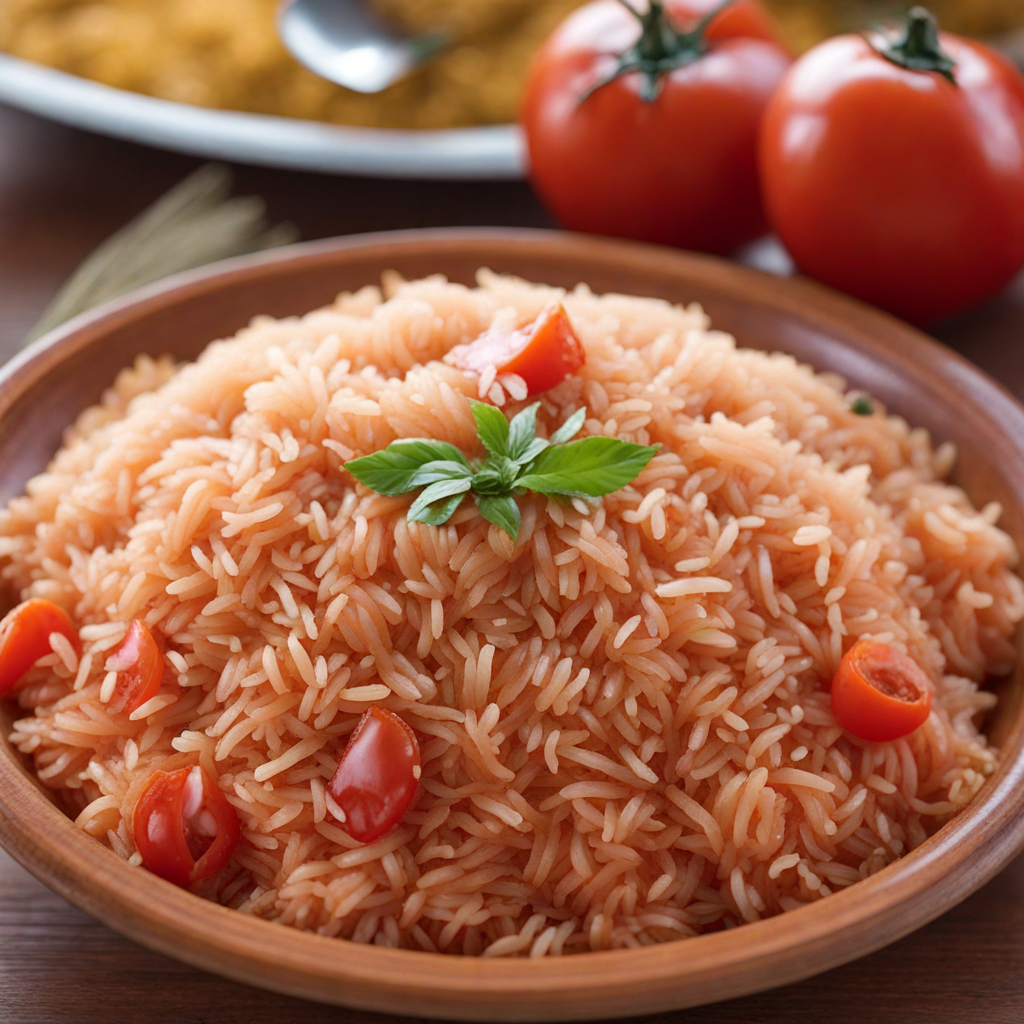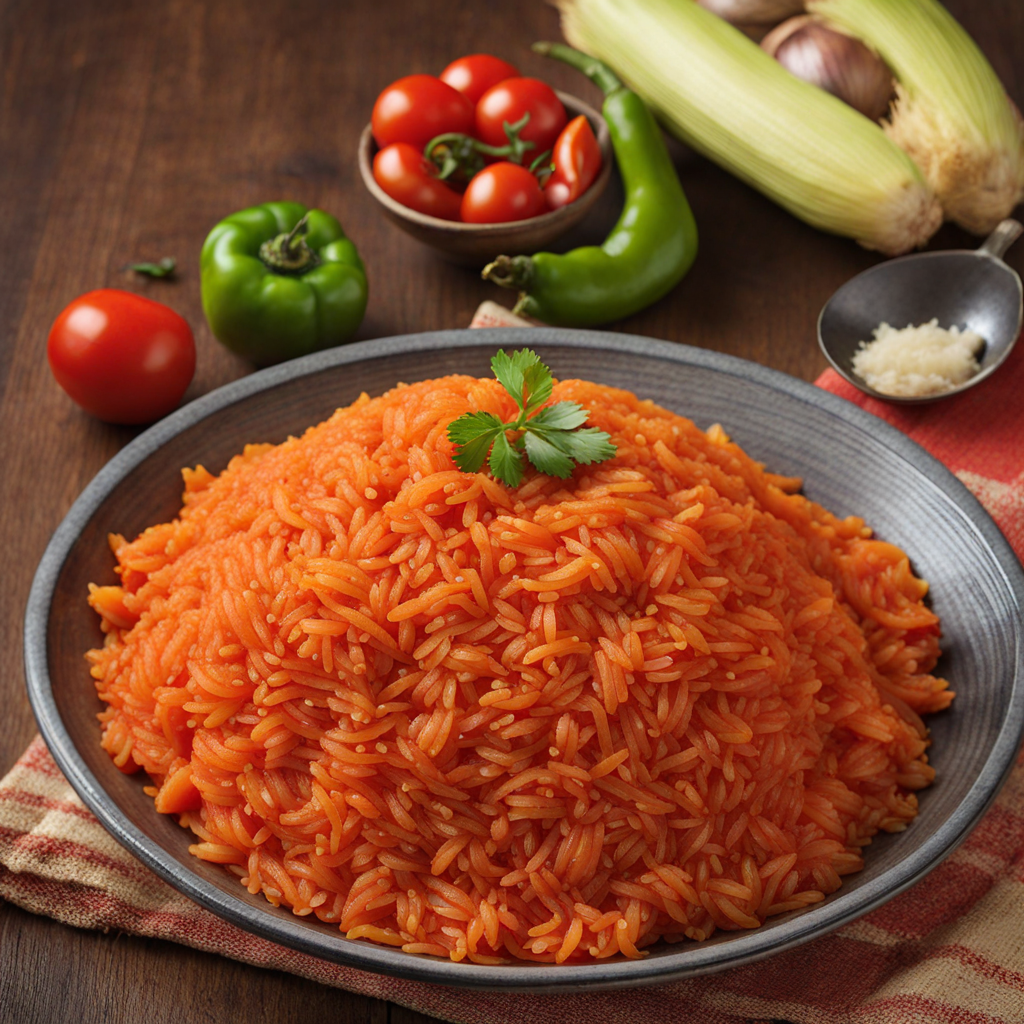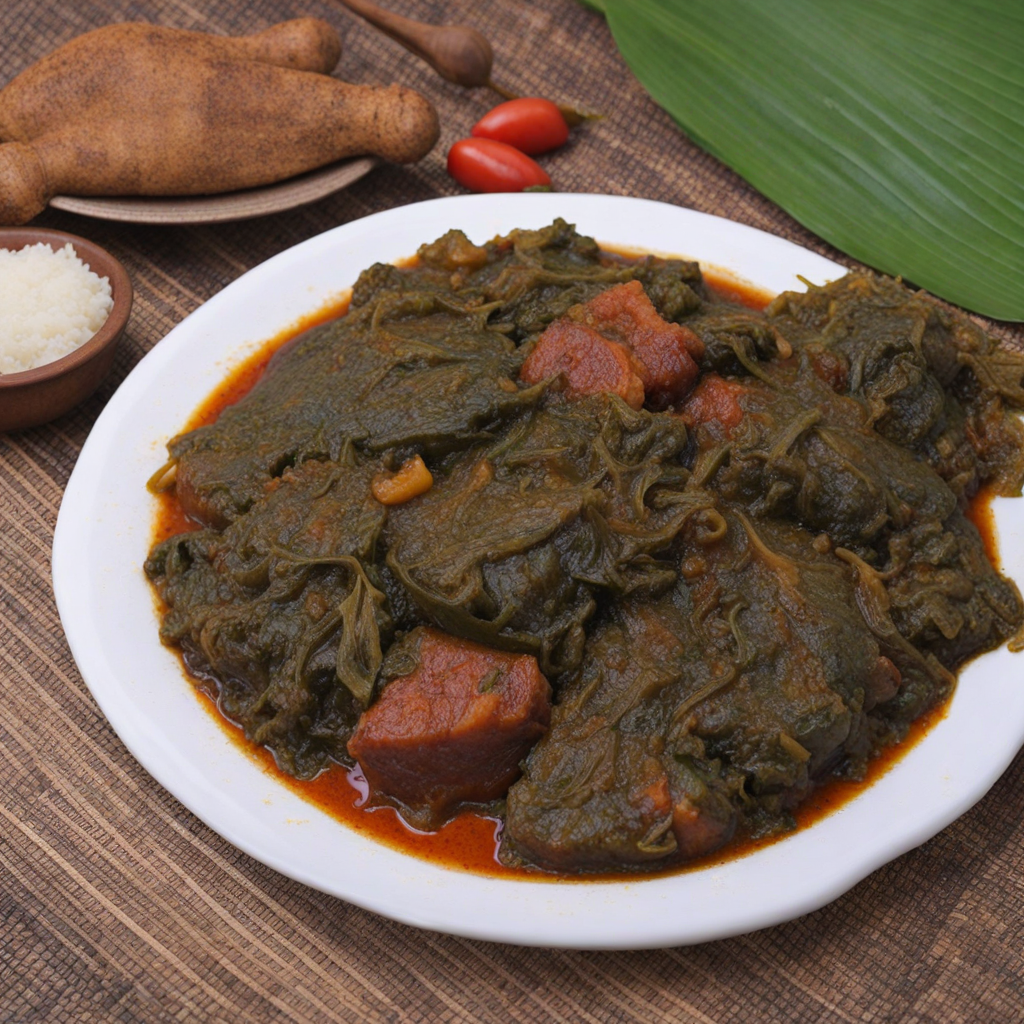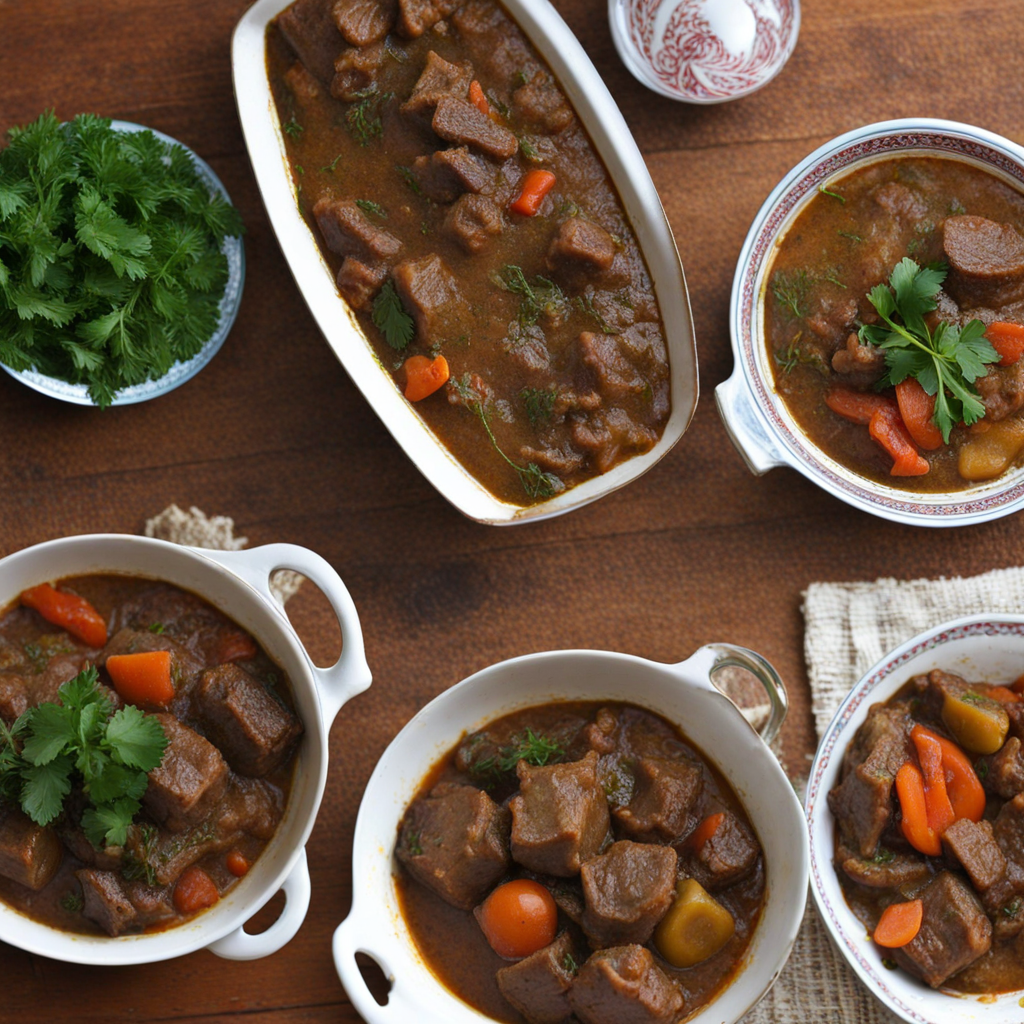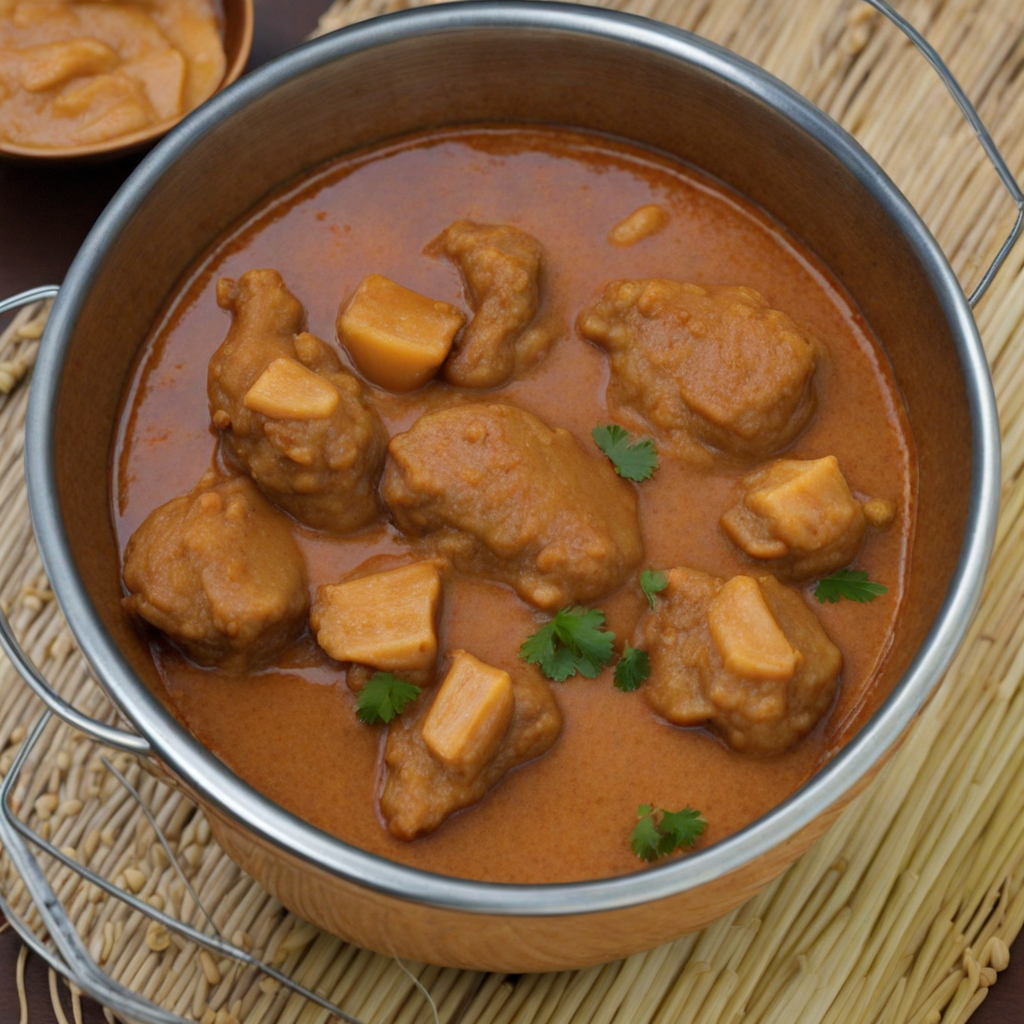Liberian Jollof Rice
Liberian Jollof Rice is a vibrant and flavorful dish that showcases the rich culinary heritage of West Africa, particularly from Liberia. This one-pot meal features rice cooked in a savory tomato-based sauce, infused with an array of spices, which gives it a distinct taste and aroma. The heart of this dish lies in its well-balanced blend of ingredients, including ripe tomatoes, onions, bell peppers, and garlic, which come together to create a thick, rich base that envelops the rice, allowing each grain to soak up the flavors. The addition of spices such as thyme, bay leaves, and chili peppers adds depth and warmth, making each bite an exciting culinary experience. What sets Liberian Jollof Rice apart from other versions is its unique use of local ingredients, often incorporating vegetables like carrots and green beans, and sometimes even meats such as chicken, beef, or fish. The proteins are typically marinated with spices before being cooked alongside the rice, imparting a savory richness that complements the dish. The result is a colorful and hearty meal that is both satisfying and nourishing, perfect for family gatherings and celebrations. This dish is often served with fried plantains or a side salad, enhancing the overall experience with contrasting textures and flavors. The sweetness of the plantains pairs wonderfully with the spiciness of the Jollof, while a fresh salad adds a crisp, refreshing element. Enjoying Liberian Jollof Rice is not just about tasting a meal; it’s about immersing oneself in the culture and traditions of Liberia, where food is a central part of community and family life.
How It Became This Dish
The History of Jollof Libérien: A Culinary Journey from the Heart of West Africa Origins and Cultural Significance Jollof Libérien is a vibrant and flavorful dish that embodies the rich culinary traditions of West Africa, particularly the country of Liberia. It is a variant of the broader Jollof rice family, which is popular across several West African nations, including Nigeria, Ghana, and Senegal. The dish's origins are deeply rooted in the historical migration and trade patterns of the region, intertwined with the cultural exchanges that have shaped the culinary landscape of West Africa. The term "Jollof" is believed to have originated from the Wolof people, who inhabit Senegal and The Gambia. The word itself is derived from "Jolof," an ancient kingdom that was a prominent trading hub in the 14th century. The dish is thought to have evolved from the traditional cooking practices of the Wolof, who used rice as a staple, combining it with tomatoes, peppers, and various spices. Over time, this dish spread across the region, adapting to the local ingredients and tastes of different communities. In Liberia, Jollof rice is more than just a meal; it holds significant cultural importance. It is often prepared for special occasions such as weddings, birthdays, and national holidays, serving as a symbol of hospitality and communal celebration. The dish is typically enjoyed with a variety of accompaniments, including grilled chicken, fish, or beef, showcasing the rich biodiversity and culinary diversity of the region. Ingredients and Preparation Jollof Libérien is characterized by its use of long-grain rice, which is cooked in a savory and slightly spicy sauce made from tomatoes, onions, and bell peppers. The dish often incorporates a blend of spices, such as thyme, bay leaves, and chili peppers, which contribute to its aromatic and flavorful profile. The preparation method typically involves sautéing the tomato sauce before adding the rice and allowing it to simmer, absorbing the rich flavors. While the core ingredients remain consistent, the specific variations of Jollof Libérien can vary from household to household, influenced by personal preferences and regional ingredients. Some variations might include the addition of vegetables like carrots and peas, or the inclusion of proteins such as shrimp or goat meat, reflecting the local availability of ingredients and the creativity of the cook. Historical Context and Development The development of Jollof Libérien can be traced back to the migrations of various ethnic groups into Liberia. The arrival of freed slaves from the Americas and the Caribbean in the early 19th century significantly influenced Liberian cuisine. These settlers brought with them culinary techniques and ingredients that merged with the indigenous practices, creating a unique gastronomic fusion. Jollof rice, which was already gaining popularity in neighboring countries, found a new home in Liberia, where it was embraced and adapted. The dish's popularity further surged during the civil wars in Liberia, which lasted from 1989 to 2003. The conflicts disrupted traditional agricultural practices and food supply chains, forcing communities to rely on simpler, more resilient recipes that could be made with limited resources. Jollof rice, with its versatile ingredients and communal nature, became a staple food during this tumultuous period. It was often cooked in large quantities for families and neighbors, fostering a sense of community and resilience amid adversity. In the post-war era, as Liberia began to rebuild and redefine its cultural identity, Jollof Libérien evolved into a symbol of national pride. The dish gained recognition not only within Liberia but also among the Liberian diaspora. Festivals celebrating Liberian culture often feature Jollof rice as a centerpiece, highlighting its significance in celebrating heritage and community. Contemporary Views and Global Influence Today, Jollof Libérien continues to thrive as a beloved dish in Liberia and among Liberians living abroad. It has found its way into international cuisine, with food enthusiasts and chefs around the world embracing its vibrant flavors. In recent years, Jollof rice has become a culinary ambassador for West African cuisine, featuring in food festivals, cooking competitions, and even social media challenges that celebrate its versatility and appeal. The "Jollof rice wars," a friendly rivalry among West African countries over who makes the best Jollof, have also contributed to the dish's fame. While each country boasts its own unique take on the dish, the shared love for Jollof rice underscores the interconnectedness of West African cultures and their culinary traditions. This playful competition fosters a sense of community and pride among the nations, encouraging culinary exploration and appreciation. Conclusion Jollof Libérien is more than just a dish; it is a testament to Liberia's rich history, cultural significance, and resilience. From its origins in the ancient Wolof kingdom to its contemporary status as a beloved staple in Liberian cuisine, Jollof Libérien has undergone a remarkable evolution. It represents the blending of traditions, the spirit of community, and the enduring legacy of West African culinary practices. As Jollof Libérien continues to gain recognition on the global stage, it serves as a delicious reminder of the power of food to connect people, tell stories, and celebrate cultural heritage. Whether enjoyed at a family gathering, a festive celebration, or simply as a comforting meal, Jollof Libérien remains a cherished part of Liberia’s identity, reflecting the nation’s past, present, and future.
You may like
Discover local flavors from Central African Republic


